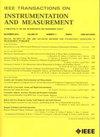永磁电动轮驱动的 HTS 磁悬浮列车的动态特性测量与分析
IF 5.6
2区 工程技术
Q1 ENGINEERING, ELECTRICAL & ELECTRONIC
IEEE Transactions on Instrumentation and Measurement
Pub Date : 2024-10-16
DOI:10.1109/TIM.2024.3481548
引用次数: 0
摘要
高温超导(HTS)磁悬浮列车具有自稳定、无拖拽、环保、安全可靠、适合高速等独特优势。然而,用作推进系统的直线电机容易对列车产生不可避免的法向力干扰。因此,改进传统推进系统的局限性,降低建造成本,是促进 HTS 磁悬浮技术发展的重要课题。本研究以 HTS 磁悬浮列车原型为基础,利用高速多功能试验台对永磁电动轮(PMEDW)的动态电磁力进行了分析,并在 165 米试验线上对其动态特性进行了测试。具体而言,通过分析模型计算和有限元仿真,介绍了所提出的 PMEDW 原型的基本配置和工作原理分析。此外,还利用实验和仿真结果建立了原型的动力学模型。研究了不同转速和工作间隙下的速度、推进力和加速距离。最后,在现有的 HTS 磁悬浮试验线上测试了原型车的运行性能。实验结果表明,当 PMEDW 的旋转圈数设置为 68 圈时,原型车的最大速度可达 3 m/s,且原型车的测试速度变化过程与动力学仿真结果一致。这项研究的意义在于,它可以作为一种新型驱动技术,为磁悬浮系统提供可靠的性能。本文章由计算机程序翻译,如有差异,请以英文原文为准。
Dynamic Characteristics Measurement and Analysis of HTS Maglev Vehicle Driven by Permanent Magnet Electrodynamic Wheel
High-temperature superconducting (HTS) maglev trains have the unique advantages of self-stabilization, no-drag, environmentally friendly, safe and reliable, and suitable for high speeds. However, the linear motors used as propulsion systems are easy to generate the unavoidable normal forces interference on the train. Thus, improving the traditional propulsion system limitation and reducing the construction cost is an important issue, to promote the development of the HTS maglev technology. In this study, based on the HTS maglev train prototype, the dynamic electromagnetic force of the permanent magnet electrodynamic wheel (PMEDW) is analyzed by a high-speed multifunctional test rig, and its dynamic characteristics are performed on a 165-m test line. Specifically, the basic configuration and operation principle analysis of the proposed PMEDW prototype are presented by the analytical model calculation and finite element simulation. In addition, experimental and simulation results are used to establish the prototype’s dynamics model. The velocity, propulsion force, and acceleration distance at different rotation speeds and working gaps are examined. Finally, the prototype vehicle operation performance is tested on an existing HTS maglev test line. It can be found from the experimental results that the maximum velocity of the prototype can be up to 3 m/s with the number of rotational turns of the PMEDW set to 68, and the test velocity change process of the prototype is consistent with the results of the dynamics simulation. The significance of this study can be used as a novel driving technology in maglev systems by offering reliable performance.
求助全文
通过发布文献求助,成功后即可免费获取论文全文。
去求助
来源期刊

IEEE Transactions on Instrumentation and Measurement
工程技术-工程:电子与电气
CiteScore
9.00
自引率
23.20%
发文量
1294
审稿时长
3.9 months
期刊介绍:
Papers are sought that address innovative solutions to the development and use of electrical and electronic instruments and equipment to measure, monitor and/or record physical phenomena for the purpose of advancing measurement science, methods, functionality and applications. The scope of these papers may encompass: (1) theory, methodology, and practice of measurement; (2) design, development and evaluation of instrumentation and measurement systems and components used in generating, acquiring, conditioning and processing signals; (3) analysis, representation, display, and preservation of the information obtained from a set of measurements; and (4) scientific and technical support to establishment and maintenance of technical standards in the field of Instrumentation and Measurement.
 求助内容:
求助内容: 应助结果提醒方式:
应助结果提醒方式:


